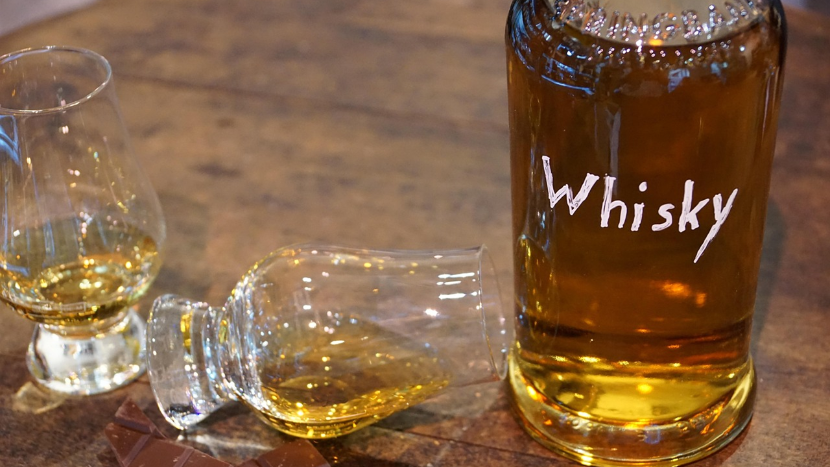“Whisky making is an act of cooperation between the blessings of nature and the wisdom of man.” — Masataka Taketsura
While on a tour of a craft distillery, the distiller (and owner) and I got to talking about the safety aspects of distilling whiskey. The question of whether whiskey needed an SDS came up. It turns out that the internet is loaded with advice, much of it contradictory. I started to offer my thoughts but stopped. What the distiller didn’t need is one more unsubstantiated opinion.
Instead, I did what everyone should do when they have a question about regulations. I checked the regulations.
Regulations for Safety Data Sheets
The regulations for safety data sheets—SDSs—are in OSHA’s Hazard Communication Standard, 29 CFR 1910.1200. The important thing to remember about the Occupational Safety and Health Administration is that it exists to protect employees from unsafe work conditions. Its regulations apply to employers. Not to the self-employed. Not to shoppers. Not to consumers. Not to homeowners. No, OSHA regulations only apply to employers with employees, and only to the extent that those employees are engaged in regulated activities. Such as exposure to hazardous substances.
Exposure to hazardous substances is where the Hazard Communication Standard, more commonly known as HazComm, comes into play. There should be no question that whiskey, and all distilled spirits, are hazardous substances. They are flammable and they are toxic. HazComm requires that employees exposed to hazardous substances be made aware of those hazards. The standard requires that communications be through three channels: labels, safety data sheets, and training, all to be described in a written hazard communication program.
Labels
The first leg of hazard communication is labeling. Section 1910.1200(f) goes into great detail about the required elements of a label. But there are exceptions to the labeling requirements. One is for distilled spirits. In 1910.1200(b)(5)(iv), it describes the exception:
Any distilled spirits (beverage alcohols), wine, or malt beverage intended for nonindustrial use, as such terms are defined in the Federal Alcohol Administration Act (27 U.S.C. 201 et seq.) and regulations issued under that Act, when subject to the labeling requirements of that Act and labeling regulations issued under that Act by the Bureau of Alcohol, Tobacco, Firearms and Explosives;
It’s not that OSHA doesn’t care about labeling distilled spirits. It’s that another federal agency already has jurisdiction over labeling distilled spirits. So, for distillers, complying with the requirements of the Alcohol and Tobacco Tax and Trade Bureau satisfies the labeling requirements of OSHA’s HazComm standard.
Safety Data Sheets
Just about everyone that works in an industrial or manufacturing setting has seen a safety data sheet, the second leg of hazard communication. (Yes, they used to be called Material Safety Data Sheets – MSDSs). The manufacturer or importer of the hazardous substance is responsible for preparing its SDS.
Section 1910.1200(g) is where the standard lists all the requirements for preparing an SDS. Once again, though, there is an exception for alcoholic beverages. Section 1910.1200(b)(6) lists several classes of products that are not subject to the HazComm standard at all. This includes tobacco or tobacco products, wood or wood products, and food or alcoholic beverages. Specifically, section 1910.1200(b)(6)(v) expresses this general exception as
Food or alcoholic beverages which are sold, used, or prepared in a retail establishment (such as a grocery store, restaurant, or drinking place), and foods intended for personal consumption by employees while in the workplace;
So, the exception for alcoholic beverages is limited to retail establishments. The tasting room or gift shop in a distillery would qualify as a retail establishment, but the production area would not.
Employee Information and Training
The third leg of the hazard communication requirements is employee information and training, found in Section 1910.1200(h). Every craft distiller I have ever met is rightly proud of what they do and wants their employees to be well trained. So, if they are not complying with the requirements of this section, it’s because they don’t know what they are, not because they don’t want to. In short, these are the training requirements:
- Method to detect presence or release in the work area
- The physical, health, combustible dust and other hazards of the materials in the work area.
- The measures employees can take to protect themselves from these hazards
- The details of the HazComm program, including where to get access to the written program.
Does Whiskey Need an SDS?
It should be clear by now what the answer is to the question “Does Whiskey Need an SDS?” Yes. Emphatically, yes. While a small distillery where the only exposure is to the owner (even if they have an employee running the gift shop, a retail establishment) does not need to implement a full HazComm program, the distributors to which they ship their product are entitled to receive an SDS from “the manufacturer”.
So, yes, whiskey and other distilled spirits need an SDS.
Craft Distilleries Need to Develop HazComm Programs
When craft distilleries have employees working in the whiskey production, they need to develop a written HazComm program, along with SDSs and training. Fortunately, the efforts to comply with TTB requirements for labeling absolve them of any additional labeling requirements from OSHA for their whiskey.
Whiskey and other distilled spirits are almost infinite in their variety and nuance. On the other hand, the hazards for whiskey and other distilled spirits are the same. That means that a HazComm program does not need to be developed from scratch. But it does need to be developed.
